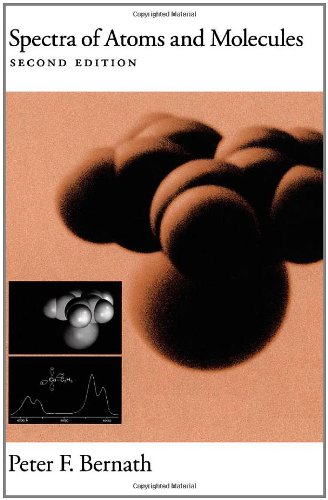Spectra of Atoms and Molecules book download
Par fisher craig le lundi, novembre 21 2016, 20:51 - Lien permanent
Spectra of Atoms and Molecules. Peter F. Bernath

Spectra.of.Atoms.and.Molecules.pdf
ISBN: 0195075986,9780195075984 | 405 pages | 11 Mb

Spectra of Atoms and Molecules Peter F. Bernath
Publisher: Oxford University Press
Spectroscopy is the study of matter and how electromagnetic radiation interacts with it. (Phys.org) —A team of researchers working at China's University of Science and Technology has succeeded in developing a chemical mapping technique capable of revealing the constituent atoms of a single molecule. Atoms and molecules book download. Spectra of atoms and molecules often consist of a series of spectral lines, each one representing a resonance between two different quantum states. It emphasizes the fundamental principles of spectroscopy with its primary goal. A sample mixture of excited and ionized hydrogen gas containing both atoms and molecules would make the emission spectrum more complex. The Workshop is designed to be a meeting for physicists working on phenomena and spectroscopy of the atomic and molecular systems. Hence, the CR ionization rate within molecular clouds must be inferred by some other method such as measuring the abundance of H3+ atoms in MCs. Stark effect, the splitting of spectral lines observed when the radiating atoms, ions, or molecules are subjected to a strong electric field. Small Molecule Spectroscopy and Dynamics Video Lectures, MIT Online Course, free tutorials and lecture notes, free download, Educational Lecture Videos. Our knowledge of the structure of atoms and molecules is largely dependent upon the analyses of optical spectra, for these spectra are characteristic of the emitting atoms or molecules. When a CR They obtain multiple infrared absorption line spectra of H3+and 13CO, to trace the dense molecular gas, for two regions in the Central cluster with the Cryogenic Infrared Echelle Spectrograph on the Very Large Telescope in Chile. Absorption spectrum is the plotting of the energy that is absorbed by an element or substance. Absorption can be plotted in a wavelength, frequency or wave number. All molecules and atoms absorb, as well as emit, light at varying wavelengths. Photoelectron spectras of 4 halogen gases are shown in the figure below. There are of course other methods by which atomic-resolution molecular structures can be obtained, such as by nuclear magnetic resonance (NMR) spectroscopy or crystallography. The photoelectron spectrum of a molecule contains a series of peaks, each corresponding to a molecular orbital energy level. The sample of hydrogen that scientists use to obtain these spectra is very pure. The Basics of Spectroscopy in Astronomy.